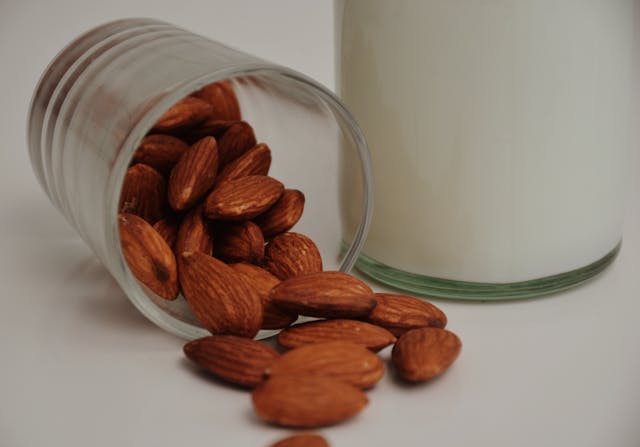Vitamin D, often dubbed the “sunshine vitamin,” is a crucial nutrient that plays a significant role in maintaining our health. However, despite its importance, there’s a lot of confusion and myths surrounding it. In this blog, we’ll unravel these myths, explore why vitamin D is vital for our bodies, and provide tips on how to get enough of it through sunlight and food. So, let’s shed some light on the sunshine vitamin!
What is Vitamin D, and Why is it Important?
Vitamin D is a fat-soluble vitamin that helps the body absorb calcium and phosphorus, which are essential for maintaining strong bones and teeth. But its benefits go beyond bone health. Vitamin D plays a critical role in supporting the immune system, reducing inflammation, and even regulating mood and warding off depression. Research has also linked adequate levels of vitamin D to a lower risk of diseases such as multiple sclerosis, heart disease, and certain cancers .
Myths and Confusion Surrounding Vitamin D
One of the biggest myths about vitamin D is that spending time in the sun is enough to meet all our vitamin D needs. While it’s true that sunlight triggers the production of vitamin D in our skin, several factors can influence how much vitamin D we actually produce. These include skin tone, geographic location, time of day, and even the use of sunscreen. For example, people with darker skin tones have more melanin, which can reduce the skin’s ability to produce vitamin D from sunlight. Additionally, those living in higher latitudes where the sun’s rays are weaker, especially during the winter months, may not produce enough vitamin D from sunlight alone .
Another common misconception is that vitamin D can be found in abundance in all foods. While some foods do contain vitamin D, it’s relatively rare in the natural food supply. This is why many foods are fortified with vitamin D to help people meet their daily needs.

The Sunshine Connection: How Much Sun Equals Vitamin D?
So, how much sun exposure is needed to get enough vitamin D? It’s a bit of a balancing act. Generally, about 10-30 minutes of midday sunlight several times a week can be enough for most people to produce adequate levels of vitamin D. However, this can vary widely depending on skin type, age, and location. For example, someone with lighter skin might need just 10 minutes, while someone with darker skin might require closer to 30 minutes. During the winter months or in areas with limited sunlight, getting sufficient vitamin D from sunlight alone can be challenging .
To put it into perspective, about 15-20 minutes of sun exposure on a summer day can produce as much vitamin D as eating several servings of vitamin D-rich foods. For instance, 3 ounces of cooked salmon provides about 450 IU of vitamin D, whereas 10-15 minutes of sun exposure can generate between 3,000 to 5,000 IU, depending on various factors .
Foods That Boost Your Vitamin D Intake
While sunlight is the best natural source of vitamin D, you can also boost your intake through certain foods. Fatty fish like salmon, mackerel, and tuna are among the best sources. Cod liver oil is another excellent option, though it may not be the most palatable for everyone. Additionally, fortified foods like milk, orange juice, and cereals can help you meet your daily vitamin D needs. For those on a plant-based diet, mushrooms exposed to sunlight are a good source, as well as fortified plant milks and cereals .
Here’s a quick list of vitamin D-rich foods to include in your diet:
- Fatty fish (salmon, mackerel, sardines)
- Egg yolks
- Fortified dairy products (milk, yogurt)
- Fortified plant-based milks (soy, almond)
- Mushrooms exposed to sunlight
- Fortified cereals

Why Vitamin D is More Important Today Than Ever
Today, our lifestyles have drastically changed. With more people working indoors and spending less time outside, vitamin D deficiency has become more prevalent. Modern diets, which often lack sufficient vitamin D, coupled with limited sun exposure, mean that more people are at risk of deficiency.
Vitamin D deficiency can lead to a range of health issues, from bone-related diseases like rickets in children and osteoporosis in adults, to more subtle issues like chronic fatigue, depression, and a weakened immune system. Recent studies have also highlighted the importance of vitamin D in reducing the severity of respiratory infections, making it particularly relevant in today’s health landscape .
A Historical Perspective: The Sunshine Vitamin’s Journey
Historically, the discovery of vitamin D was linked to the prevention of rickets, a bone-deforming disease common in children during the Industrial Revolution. At that time, urbanization led to less sun exposure, and rickets became widespread. It was only when scientists discovered that exposure to sunlight could prevent and even cure rickets that vitamin D’s importance came to light. This led to the fortification of foods like milk with vitamin D, which significantly reduced the incidence of rickets .

Make Vitamin D a Daily Habit
Ensuring you get enough vitamin D is essential for maintaining your overall health. While a little sunshine can go a long way, it’s important to combine it with vitamin D-rich foods to ensure you’re getting enough, especially if you live in an area with limited sunlight or have other risk factors for deficiency. Remember, a balanced diet, regular outdoor activities, and possibly a vitamin D supplement (if recommended by your healthcare provider) are key to keeping your levels in check. So go ahead, enjoy some sunshine, and don’t forget to stock up on those vitamin D-rich foods!
Love Life x
References:
- Holick, M. F. (2007). Vitamin D deficiency. New England Journal of Medicine, 357(3), 266-281.
- Institute of Medicine (US) Committee to Review Dietary Reference Intakes for Vitamin D and Calcium. (2011). Dietary Reference Intakes for Calcium and Vitamin D.
- Martineau, A. R., et al. (2017). Vitamin D supplementation to prevent acute respiratory tract infections: systematic review and meta-analysis of individual participant data. BMJ, 356.
- Ovesen, L., Andersen, R., & Jakobsen, J. (2003). Geographical differences in vitamin D status, with particular reference to European countries. Proceedings of the Nutrition Society, 62(4), 813-821.
- Clemens, T. L., Adams, J. S., Henderson, S. L., & Holick, M. F. (1982). Increased skin pigment reduces the capacity of skin to synthesise vitamin D3. The Lancet, 319(8263), 74-76.
- Holick, M. F. (2004). Sunlight and vitamin D for bone health and prevention of autoimmune diseases, cancers, and cardiovascular disease. American Journal of Clinical Nutrition, 80(6), 1678S-1688S.
- Cashman, K. D. (2007). Vitamin D in childhood and adolescence. Postgraduate Medical Journal, 83(978), 230-235.
- DeLuca, H. F. (2004). Overview of general physiologic features and functions of vitamin D. American Journal of Clinical Nutrition, 80(6), 1689S-1696S.

